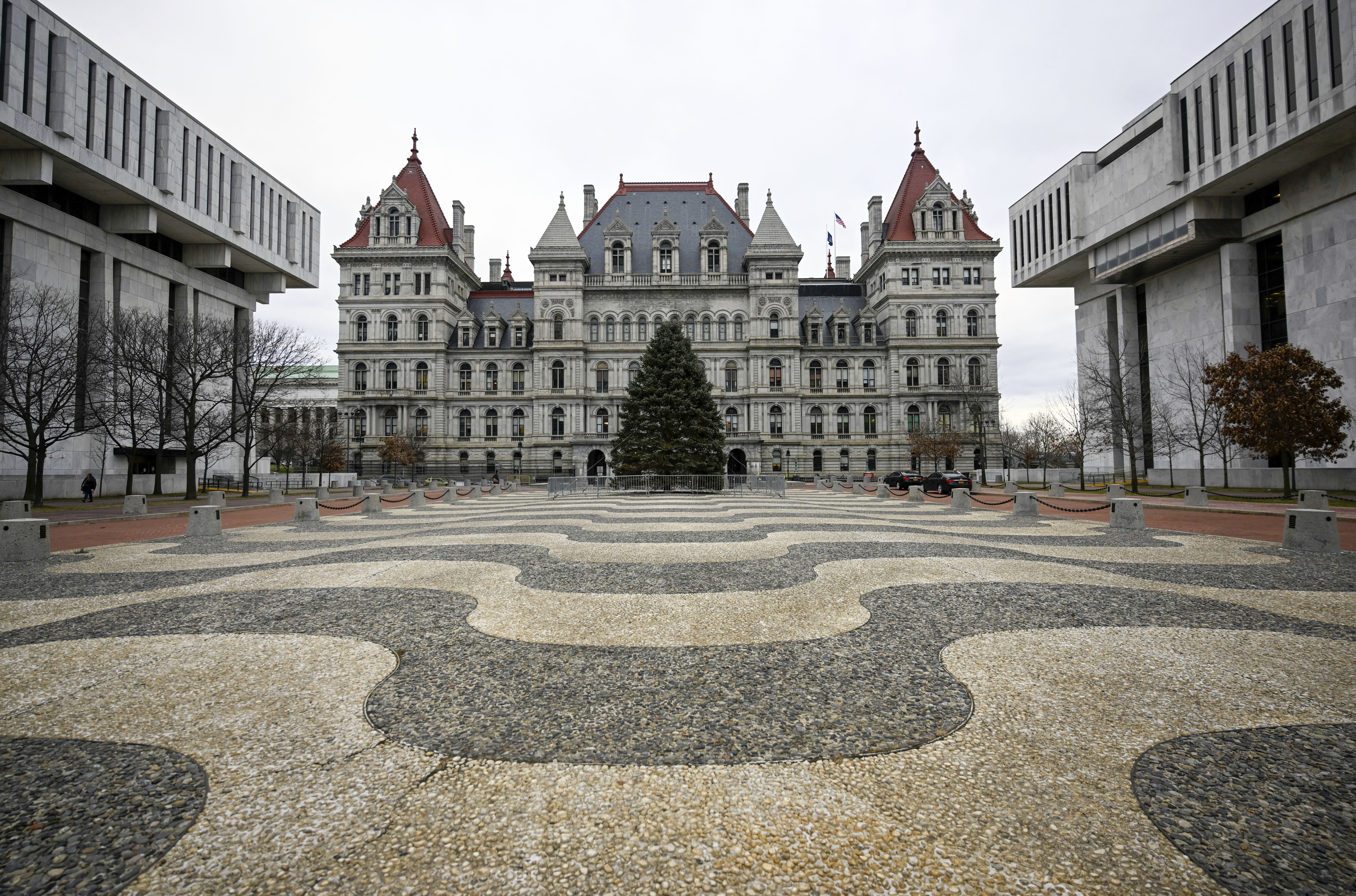
ALBANY, New York — New York’s redistricting commission is returning to business on Thursday with the hope it can reach a bipartisan deal on new House lines that could play a pivotal role in which party controls the chamber next year.
“I believe there is,” said Charles Nesbitt, the Republican chair of the commission, said when asked if there will be an agreement.
“That’s what we’re hoping for,” Democratic Chair Ken Jenkins said in a separate interview with POLITICO. “But you never know.”
A deal between five Democrats and five Republicans on the Independent Redistricting Commission would not be the end of the process to redraw New York's 26 House seats after the state's top court last year tossed the current lines. There are about six battleground races in New York this year, and any shift in the lines could prove important in who wins the seats.
Any maps the commission produces would be voted on by the state Legislature — and the Democrats who dominate it would have the option of rejecting the lines and instead drafting their own.
But several individuals familiar with the process have said in recent weeks that a comprise from the commission might have a shot at winning approval after similar efforts failed in 2022, leading to the current situation.
A compromise plan would be better for the GOP than one drawn entirely by Democrats, and some Republicans might accept lines that decrease their chances in a seat or two rather than risk losing to an all-out gerrymander from Democrats.
And Democrats could be content with maps that slightly improve their standing, while letting them avoid accusations of gamesmanship and another drawn-out legal battle.
Also, maps drawn by the Legislature would need to be approved by supermajorities that would require near unanimity from Democrats. A bipartisan plan that comes from the commission would need only a simple majority.
Commissioners were tight-lipped late Monday about what the lines might look like, and several officials in the state Legislature said they had not yet heard any details.
“There’s still some things that are being finalized,” Jenkins said. “The commission is still working towards Thursday.”
State officials familiar with the process have predicted in recent weeks that a compromise plan could make the Syracuse-area seat held by freshman Republican Rep. Brandon Williams more Democratic-friendly.
One of the districts held by upstate Republican Reps. Marc Molinaro and Mike Lawler could also shift to help Democrats — but probably not both without hurting other incumbent Democrats in neighboring seats.
Republican-held districts on Staten Island and Long Island could remain mostly the same as they were in 2022, but there is also the potential they could face some changes, as well as key ones in the Hudson Valley. Republicans in New York were able to flip three seats in 2022 with the current lines, giving the GOP a slim House majority.
One unanswered question is when the Legislature would act on the lines.
There was a widespread expectation last week that the commission would meet later this week. That would let them wait to see how Tuesday’s special election to replace expelled Rep. George Santos on Long Island shakes out, though commissioners deny that played a role in the timing.
“No truth to that,” Nesbitt responded Monday.
When there was an expectation that there would be a meeting on this Wednesday, the Legislature had started to explore the possibility of extending their work week, which is currently scheduled to end that day in Albany. They could then wrap up the process before the weekend.
But they do not have definite plans on a return yet. The Thursday afternoon timing of the meeting means it would be a logistical scramble to vote even on Friday.
Meanwhile, members are scheduled to be off for all next week for President’s Day and midwinter break. But a special session next week remains a possibility, some officials suggested.
If they don’t return early, their next scheduled day in Albany is Monday, Feb. 27 — the day that congressional candidates are due to start collecting petitions.
Even though members say they’re hopeful for a deal, every Albany denizen is aware that an agreement by the commission and the Legislature can always fall apart.
“We came awfully close in 2021,” said Republican state Sen. Jack Martins, a co-chair of the commission when it attempted to draw lines in its last iteration. “And there was a sharp change by members of the commission.”
Commissioners failed to agree on lines in that go-around.
When their first set of maps was rejected by the Legislature, the two parties never even agreed on a meeting date to discuss a second draft — a procedural shortcoming that led to the courts tossing the lines that were eventually drawn by the Legislature.
A December decision by the Court of Appeals ordered the commission to pick up where it left off and negotiate a second plan by Feb. 28.

 9 months ago
9 months ago








 English (US)
English (US)